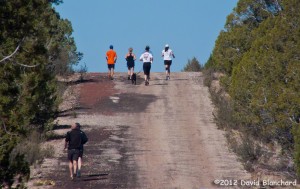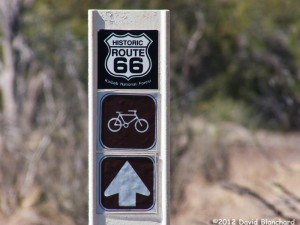Always looking for new trail running routes, the Northern Arizona Trail Runners Association (NATRA) found themselves on a section of old Route 66 between Ash Fork and Williams, Arizona, on this sunny and warm spring morning. This section is also known as the Ash Fork Hill Bicycle Tour. (Map here.)


Two parallel segments of Route 66 exist here: the original 1922 alignment (also known as the Old Trails Highway) and the 1931 alignment that replaced it. And, of course, the newest alignment is Interstate 40 just a few hundred meters away. The 1931 segment is composed of old and crumbling asphalt while the 1922 segment retains the original gravel road.

The group initially headed westward on the paved segment which has a net downhill and made the return trip on the uphill graveled segment. The soft gravel combined with the steady uphill climb made us pay for our earlier cruise on the downhill.

A comparison of the retired segments and the current Interstate highway provides an interesting perspective on how American highways have evolved over the decades.

It’s fascinating to imagine cars driving on these old roads — where they came from and where they were going.


